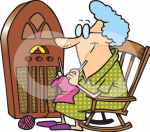6WF Perth
1925
The
first shortwave commercial operations in Australia were pioneered by the Perth station 6WF, which conducted special tests,
on about 3 MHz in 1925, using the call sign 6AG.
VK6ME
January 27 1937
Available radio records would suggest
that the first program broadcast from a new shortwave station in Western Australia took place on this date
This is how it all happened. Back in April 1936, unannounced test broadcasts
were heard from a shortwave station with the callsign VK2MD. These test broadcasts on 34 metres consisted of informal
readings from a technical radio manual. The transmitter location was the AWA radio factory located at Ashfield on the
outer edge of Sydney.
At the time it was conjectured that this new transmitter was intended
for installation at Suva, capital of the South Pacific islands of Fiji. All enquiries made to AWA remained ignored and
unanswered.
As it happened, two broadcast transmitters were under construction at
the AWA radio factory around the same time. Subsequent events confirm that these two transmitters were a 200 watt unit
that was installed as VK6ME at Perth in Western Australia, and a 500 watt unit that was installed as VPD2 at Suva in Fiji.
Although it is not stated anywhere, it is quite possible that both transmitters
were tested on-air at the factory around the same time under the callsign VK2MD. There are no known QSLs confirming
the reception of these test broadcasts from VK2MD.
The 500 watt transmitter that was installed in Suva, Fiji, supplemented
the coverage of an earlier unit at the same location, and it was officially inaugurated on August 19, 1936. Many QSL
cards were issued to verify the transmissions from VPD2, and these were posted in both Sydney and Fiji.
The AWA shortwave unit that became VK6ME was installed in a small transmitter
building at the Applecross Transmitting Station that was in use as a communication facility. Transmitter VIP was on
the air with transcontinental traffic to Sydney; transmitter VJP was in use for traffic with coastal and regional locations
in Western Australia; and transmitter VKK was in use for overseas traffic.
The earliest known test transmissions from VK6ME were noted in the United
States towards the end of 1936. However, available evidence would suggest that some form of program broadcasting began
on January 27, 1937 using studios in a nearby residence on the same estate at Applecross, in suburban Perth, half way to the
port city, Freemantle. Perhaps this date was chosen in honor of "Australia Day."
March 22 1937
The official inauguration
of the new VK6ME was conducted with speeches and messages.
This station was on the air just one evening a week, Sundays,
on 9590 kHz, the same channel as used on other days of the week by the sister station VK2ME in Sydney.
At the onset of the European emergency at the beginning of September 1939, program broadcasting
from VK6ME was terminated and the transmitter was taken into service for high speed telegraphy. In 1942 the transmitter
was re-installed into the main transmitter

